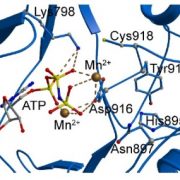
Active Support: GHR1 is a Pseudokinase that acts as a Scaffolding Component
Blog, The Plant Cell, The Plant Cell: In BriefPlants balance CO2 uptake with water loss via a complex network of signals regulating stomatal aperture size. Stomata close in response to a number of stimuli, including drought, low light intensity, low air humidity, elevated intercellular CO2 concentration, pathogens, and certain air-borne chemicals…
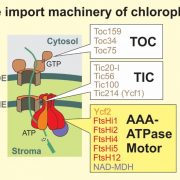
A Force-Generating Machine in the Plant's Power House: A Pulling AAA ATPase Motor Drives Protein Translocation into Chloroplasts
The Plant Cell, The Plant Cell: In BriefMost chloroplast proteins are encoded by the nuclear genome and synthesized on cytosolic ribosomes. N-terminal transit peptides serve as targeting sequences to direct precursors of chloroplast proteins to receptors on the chloroplast surface. These receptors are part of the translocase of the outer envelope,…

Inhibition of TOR, Nitrogen Assimilation, and Amino Acid Biosynthesis: Lessons from Chlamydomonas
The Plant Cell, The Plant Cell: In BriefTo survive, organisms must sense their nutritional status (including nutrient availability and quality) and regulate their growth and metabolism accordingly. In plants, animals, and fungi, the Target of Rapamycin (TOR) kinase regulates metabolism, nutrient sensing, and growth (reviewed in Dobrenel et…

Sweet and Juicy: Identification and Origins of the Dry Alleles in Sorghum
The Plant Cell, The Plant Cell: In BriefSorghum (Sorghum bicolor) is the fifth most important cereal crop globally and is considered to be the “camel among crops” due to its ability to flourish in low-nutrient soils and to withstand prolonged drought. Cultivated varieties are phenotypically and morphological diverse. Consequently, sorghum…
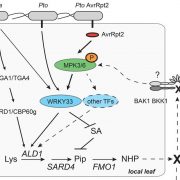
Plant Systemic Immunity Comes Full Circle: A Positive Regulatory Loop for Defense Amplification
The Plant Cell, The Plant Cell: In BriefThe plant immune system is effective in conferring resistance to various invading pathogens and pests. Membrane-localized pattern recognition receptors (PRRs) and intracellular nucleotide-binding domain, leucine-rich repeat proteins (NLRs) recognize pathogen-associated molecular patterns and pathogen…
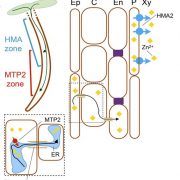
Don’t Go Grocery Shopping When Hungry! Systemic Signaling in Zinc Homeostasis
The Plant Cell, The Plant Cell: In BriefGoing grocery-shopping on an empty stomach is a bad idea. You’re bound to make poor decisions, not based on nutritional content of the food but based on temporary cravings that will leave you asking for more later. Plants face this nutritional puzzle every day, since they eat where they shop, and shop…
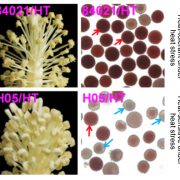
Handling the Heat - Methylome Variation Underlying Heat Tolerance in Cotton
The Plant Cell, The Plant Cell: In BriefPlants must accommodate many stresses in order to grow and reproduce normally. Heat stress in particular can negatively affect anther development in flowering plants, leading to male-sterile flowers that produce indehiscent anthers and sterile pollen, and consequently are not capable of sexual reproduction.…

Nectary Specification in Petunia and Arabidopsis
The Plant Cell, The Plant Cell: In BriefStudies of flower development have lots of information about petals, carpels, and stamens, but let’s not forget the birds and the bees—and the flies and moths—and what draws pollinators to insect-pollinated flowers, including flower color, shape, and rewards that provide energy. For example, to…

Natural Artist: How a Protein Kinase Helps Sculpt the Pollen Grain Surface From the Inside Out
Blog, The Plant Cell, The Plant Cell: In BriefFinding genes that function in plant development often requires mutant screening, but probing the wealth of natural variation can provide important insights as well. A major focus of developmental biology is uncovering the mechanism behind cell polarity, that is, how components are deposited asymmetrically…

